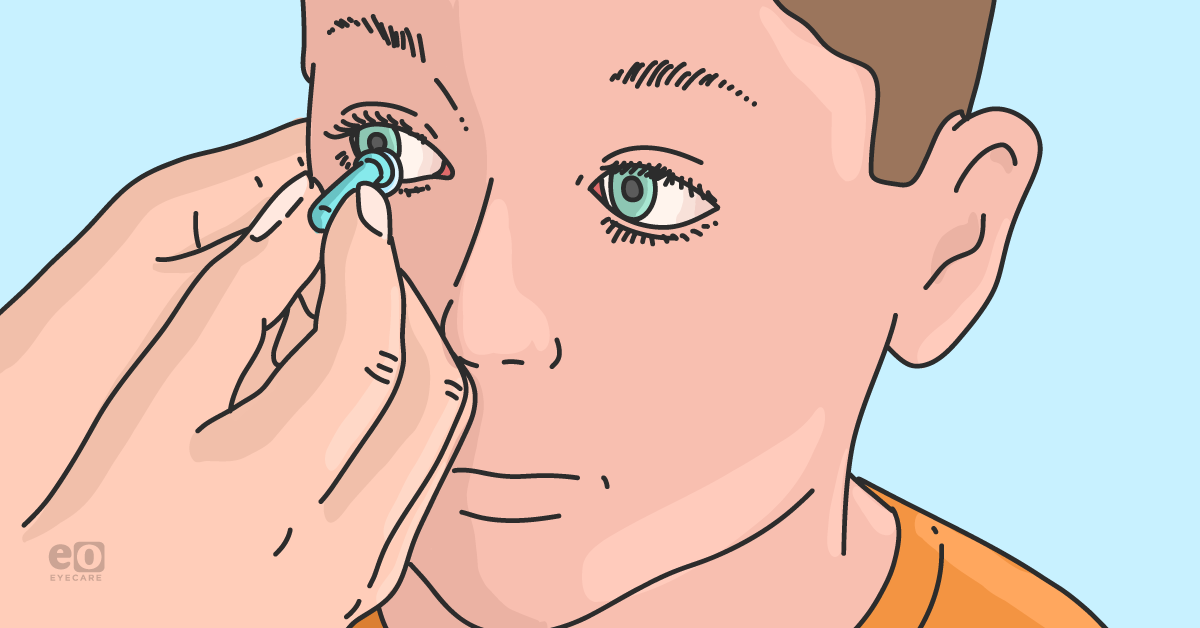When prescribing a medication for a child, I nearly always double-check that the drug is approved for their age range and the dosage is appropriate for their size.
We take extra caution with children to ensure our treatment is just right for their health and development, and that practice extends to if, when, and how we prescribe
contact lenses for children.
What is the right age for contact lenses?
Teenagers are a common demographic in which to initiate contact lens fittings. Patients between the ages of 13 and 18 years often have cosmetic and social motivations to wear contact lenses. Subsequently, these young adults are also starting to display and practice the types of responsible actions that are necessary for
healthy contact lens wear.
When it comes to younger children (<12 years), however, eyecare providers (ECPs) are a bit more hesitant to initiate a contact lens fitting. While about 70% of ECPs think that children 12 years and younger can be successfully fit with contact lenses, spectacles are the primary method of vision correction in children 8 to 9 years (51%) and 10 to 12 years (71%).1
ECPs may wait to fit children in contact lenses for a variety of well-intentioned reasons, but ocular health is likely the primary concern for both ECPs and parents when considering initiating contact lens wear in children.
Microbial keratitis, the most vision-threatening contact lens complication, is difficult to determine the risk of, as it is, mercifully, rare.
A recent rather large retrospective review of children fit with contact lenses between the ages of 8 and 12 years, however, reported that rates of microbial keratitis were comparable to those seen in adult populations.2
Potential adverse effects of contact lens wear
Interestingly, evidence shows that children may be the
least likely to experience other adverse events (AEs) associated with contact lens wear. The
Contact Lens Assessment in Youth (CLAY) study group sought to understand AEs in contact lens-wearing children, teens, and young adults.
Through their work, it has been reported that teens (13 to 17 years) and young adults (18 to 25 years) have increasingly higher rates of complications compared to children (8- to 12-year-olds), possibly because children have more parental supervision.3,4
Further, the group concluded that age-related risk for events that interrupt contact lens wear peaks in late adolescence to early adulthood.3,4 Their findings agree with other studies that reported contact lens wearers fit as children are not more likely to have AEs related to contact lens wear than those fit as teens,5 and that children (8 to 12 years old) have significantly lower rates of eyecare visits related to complication from contact lens wear.6
Considering these results collectively, one could argue that fitting children earlier could instill healthier habits that are necessary for successful wear and avoid adverse events that are more common later in life.
Myopia management with contact lenses
When deciding whether to fit a child with contact lenses, it is easy to worry about potential negative health implications, but ECPs should and are increasingly acknowledging the ocular health benefits a contact lens can provide when employed to slow myopia progression. It has been reported that the median age for fitting contact lenses in teenagers and children is 15 years.
For kids fit in myopia management strategies, the median age is 13 years, but the frequency of fitting children as young as 8 years old is increasing, likely due to the typical age of myopia onset in children.
7 As evidence for the effectiveness of
myopia control strategies continues to become more robust and practice standards move toward initiating myopia progression interventions in myopic children, we will continue to see the short- and long-term ocular health benefits that come with slowing myopic progression.
Implementing pediatric contact lens fittings
Contact lenses can do more than just provide clear vision—they can be instrumental in a child’s personal, social, academic, and recreational development. It has been reported that contact lenses
improve children’s self-perception in areas like social interaction with other peers, physical appearance, and athletic competence.
8Children and teenagers report feeling more confident in their appearance and participation in activities after initiating contact lens wear,9 along with improvements in quality of life (QoL) and their self esteem,10,11 especially in the areas of appearance and recreational activities.12 Therefore ECPs have a unique opportunity to provide children and teens with a vision correction option that can have a positive impact on their lives and development.
Setting time aside to fit pediatric patients in contact lenses
Once ECPs understand the QoL benefits coupled with the apparent safety of contact lens wear in children, the only other hesitation that might still influence initiating a fit is a concern for practice efficiency and exam flow. Children can be unpredictable in regards to time management and personnel resources to move them through the practice.
A study by
Walline et al. reported that, compared to teenagers (13 to 17 years), children (8 to 12 years) who were fit for the first time in contact lenses took about 15 minutes more chair time.
13 The majority of this time, however, was spent in application and removal training, which could be easily delegated to a staff member in order to free up examination room time and space.
While 15 minutes may sound like a significant commitment during a busy clinic day, consider it an opportunity, as kids who are new to contact lenses are less likely to have the
comfort and dropout issues that adults do.
Investing 15 extra minutes in a 9-year-old naive wearer may mean the patient gets several years of additional lens wear than if they waited to be fit as a teen, which benefits both the patient and the practice.
Final thoughts
Children and kids of all ages can benefit from having vision correction options beyond spectacles. Next time you prescribe a child’s first pair of glasses, consider offering contact lenses as an accompanying option.
